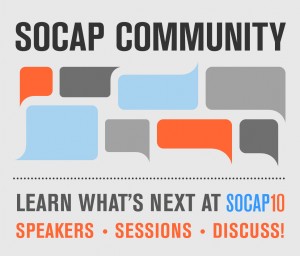Process, Methods, and Medium in Design Education
Many of us who studied under Richard Buchanan at Carnegie Mellon University are familiar with his four orders of design: a framework that include symbols, things, action, and thought. Our professional focus in design has generally evolved in complexity, mapping to these orders – graphic design to symbols, industrial design to things, interaction design to action. Now, we arrive at a place of designed thought, which Buchanan has mapped to system and environmental design. This encompasses the “space” in which design occurs: the organizational space in which design is done (the company, and the company culture); the political systems, laws, and structures that govern the work we do; the cultural and social values that are embraced by a given group; and the processes that dictate, mandate, or encourage certain actions.
A designer in any of the orders needs to understand process, methods, and medium. In all of the orders, the process is the same, while the methods change slightly and the medium changes dramatically.
Without tacit understanding of design process, the designer has no formal manner of engaging in a problem – no way of understanding the problem, or adding constraints in order to better frame and shape the problem into something that is manageable. Without both a variety of methods and the intellectual rigor to select the appropriate tool from the toolbox, the designer is not even a craftsman. They are simply a tool themselves, left to execute in the context of a menial, well defined, and usually commoditized problem space. Without expertise in a medium, a designer is only able to facilitate others who can do; they become a manager, an extra level of communication, one who simply parrots and repackages existing content without adding value. This person becomes overhead and is easily replaceable.
Undergraduate design education almost always places emphasis on medium, usually at the expense of both method and process. Foundation studies frequently reference the medium implicitly in the title of the individual class names: “2D Design”, “3D Design”, etc. Some students may eventually learn a process, but they frequently learn it in a rote fashion. They are unable to negotiate the steps they are to follow (“Conduct research with at least 10 people! Perform a survey! Draw 60 sketches!”) with the realities of the corporate or consulting environment (“No time for research! Survey? Are you kidding? Just finish the powerpoint before lunch!”) and this harsh reality can be troubling for the idealistic student, ready to do their best to support user centered design.
We need to find a way to educate future designers, arming them with a broad design process and a variety of methods, AND with deep medium expertise. This implies a longer course of study than a simple undergraduate degree and a few years of graduate work; most professionals get this training over the course of a decade or more of actually doing design work, skipping the formal training entirely. But, if we are to liberalize the educational process and extend it to more than a select handful, we need to push backwards into K-12 education and begin the process and method discussion there. Much like students learn the scientific method as an abstract and reductive model, while practicing actual science in laboratories, students of the future must learn design during their formative years, studying both the abstract and also the tactical.
We’ll explore this topic at a panel I’m leading at at SOCAP10 – the Social Capital Markets 2010 conference. Along with Dennis Littky, Mariana Amatullo, and Erica Estrada, we’ll investigate new approaches to design in higher education, highlight the thought-leaders in this space, and foster a productive dialogue around both K-12 and post-secondary education that explicitly emphasizes a transdisciplinary approach to problem solving. Hope you can join us.



